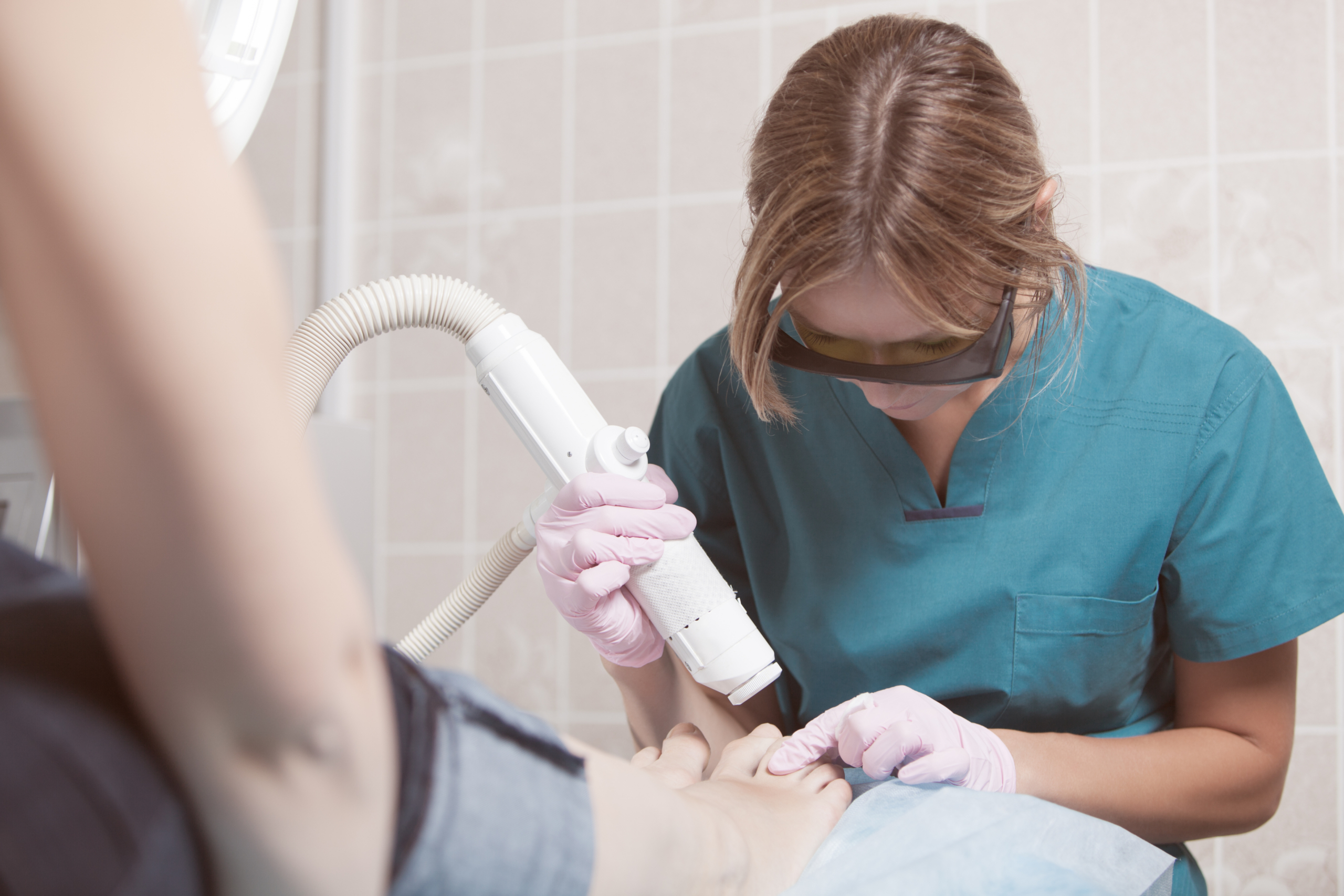Bunions
Las Vegas’ Orthopedic Foot Specialists
A bunion, medically referred to as “hallux valgus,” is a bony bump that forms at the base of the big toe, where the metatarsal bone meets the phalanx bone. It is a common foot deformity that occurs gradually over time due to a combination of genetic factors, foot structure, and footwear choices. Bunions are more prevalent among women and are often associated with wearing tight or ill-fitting shoes, particularly high heels.
The exact cause of bunions is not fully understood, but they tend to develop when the big toe pushes against the adjacent toe, causing the metatarsal bone to shift outward and the joint to protrude. This misalignment can result in pain, discomfort, and changes in the shape of the foot.
Symptoms of bunions may include:
- A visible bump at the base of the big toe joint.
- Pain and discomfort, especially when walking or wearing tight shoes.
- Redness and inflammation at the site of the bunion.
- Limited movement of the big toe joint.
- Corns or calluses that form on the bunion due to friction and pressure from footwear.
Treatment for bunions depends on the severity of the condition and the associated symptoms. Conservative measures are often recommended initially:
- Footwear Modification: Choosing shoes with a wider toe box and avoiding tight or high-heeled shoes can help alleviate pressure on the bunion and prevent further irritation.
- Padding and Cushioning: Using protective pads or cushions over the bunion can help reduce friction and alleviate pain.
- Orthotics: Custom-made or over-the-counter shoe inserts can provide support and correct foot mechanics, helping to alleviate bunion-related discomfort.
- Physical Therapy: Stretching and strengthening exercises prescribed by a physical therapist can help improve foot strength and flexibility.
- Pain Relief: Over-the-counter pain relievers or anti-inflammatory medications can provide temporary relief from pain and inflammation.
In cases where conservative measures do not provide sufficient relief, and the bunion causes severe pain or interferes with daily activities, a healthcare provider might consider surgical intervention. Bunion surgery aims to realign the affected bones, remove the bony prominence, and correct the joint position. There are various surgical techniques available, and the choice of procedure depends on factors such as the severity of the bunion, the patient’s age, and overall health.
It’s important to consult a medical professional if you suspect you have a bunion or are experiencing foot pain. Early intervention and proper management can help alleviate discomfort and prevent the condition from worsening over time.


